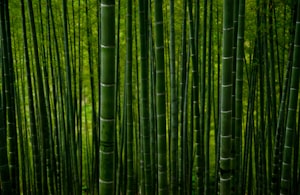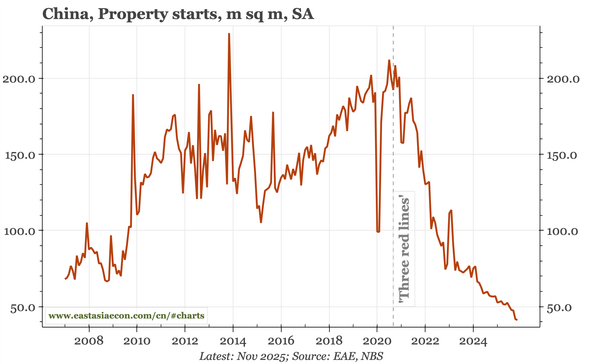China – three positive monetary dynamics
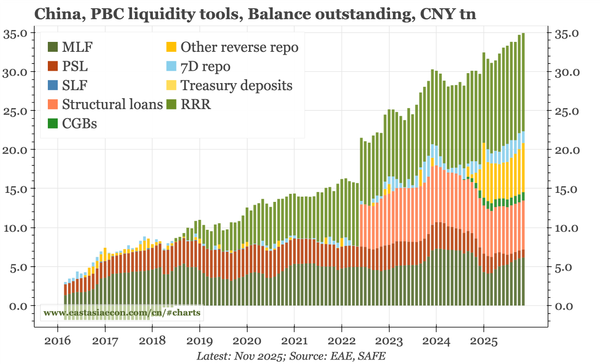
Real economy developments still look negative for inflation. That the deflator nonetheless looks to be turning can be partly attributed to local food prices and global commodity prices. However, I think monetary factors are also playing a role, with three dynamics in particular worth highlighting.
China – exports up again
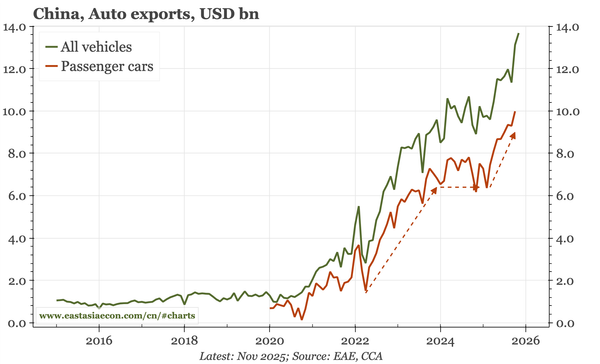
The weakness in exports of October reversed in November, with a rebound in growth to ROW, and shipments to the US stabilising. Auto shipments reached a new all-time high, and are growing as quickly this year as in the initial take-off in 2023-24. Import demand declined, so the trade surplus rose.
China – lessening deflation
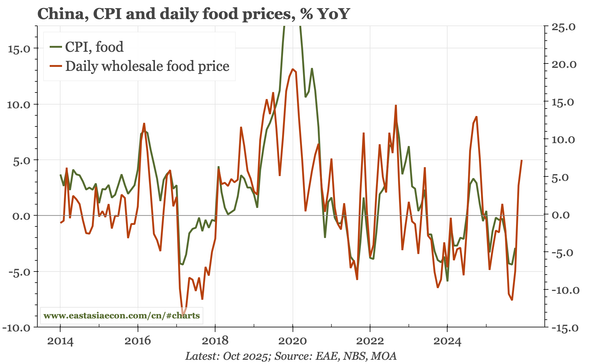
High-frequency data show upstream prices remained stable in November, while food prices have been rising. The combination points to a further lessening of headline deflation. I doubt that signals a real turn in nominal growth, though there are now some upside risks.
China – more data puzzles
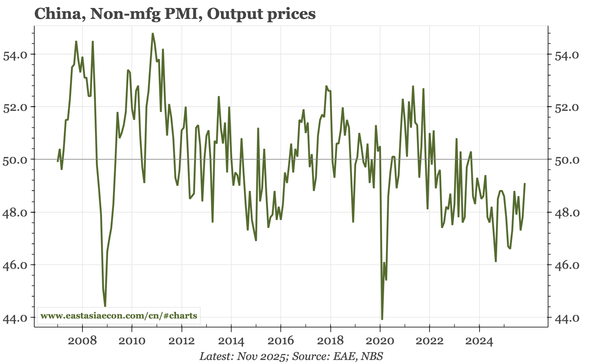
The official composite output PMI in November fell below 50. That wasn't because of FAI: the industrial PMIs were stable. Rather, it was weakness in services. That is puzzling. For now, the one concrete indicator from today's inflation is actually positive: deflation isn't getting worse.
China – prices and demand deposits stable
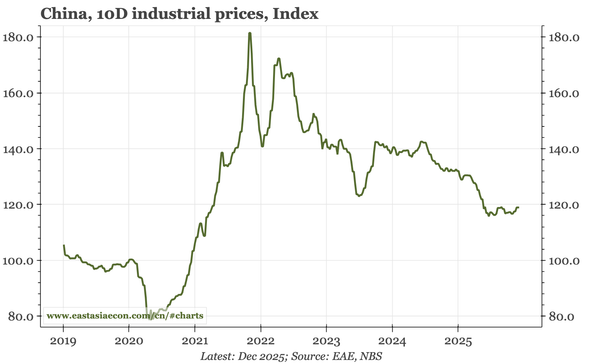
The FAI data point to the economy hitting a wall. But price data don't bear that out. Indeed, upstream prices show the recent stability of PPI is likely persisting. That is also true for the demand:time deposit ratio. The cycle as a whole remains both weak and messy, but there are some green shoots.
China – not yet soft enough
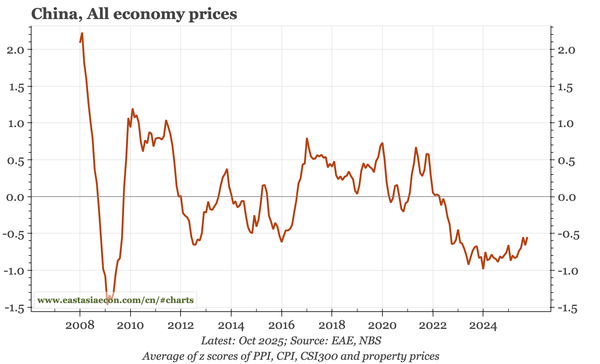
The October data are soft, but mixed: on the one hand investment terrible and property weak, on the other, output and services more stable. That probably doesn't add up to a change in policy. My idea of stabilisation does look a bit more tenuous, and would be over if upstream prices give way again.
China – monetary data a bit softer in October

Relative to my idea that the underlying economy could be stabilising, today's monetary data for October are a little soft. In particular, both M1 growth and the M1:M2 ratio ticked down, and mortgage lending also slowed. Credit growth also dropped, but only because of less government borrowing.
